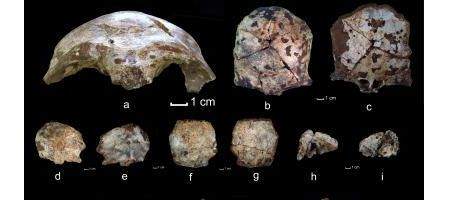The discovery of a skull in a cave in Laos has pushed back the date of human migration into southern Asia by 20,000 years.

The skull, recovered from a cave in the Annamite Mountains in 2009, indicates that ancient travelers out of Africa left the coast and inhabited a wide range of habitats much earlier than previously thought. It’s been dated to between 46,000 and 63,000 years old.
“It’s a particularly old modern human fossil and it’s also a particularly old modern human for that region,” says University of Illinois anthropologist Laura Shackelford.
“There are other modern human fossils in China or in Island Southeast Asia that may be around the same age, but they either are not well dated or they do not show definitively modern human features. This skull is very well dated and shows very conclusive modern human features,” she says.
Nothing else was found with the skull, suggesting that the cave was not a dwelling or burial site. Most likely, Shackelford says, the person died outside and the body washed into the cave sometime later.
The find reveals that early modern human migrants didn’t simply follow the coast and go south to the islands of Southeast Asia and Australia, as some researchers have suggested. It now appears that they also traveled north into very different types of terrain.
“This find supports an ‘Out-of-Africa’ theory of modern human origins rather than a multi-regionalism model,” she says. “Given its age, fossils in this vicinity could be direct ancestors of the first migrants to Australia. But it is also likely that mainland Southeast Asia was a crossroads leading to multiple migratory paths.”
The discovery also supports genetic studies that indicate that modern humans occupied that part of the world at least 60,000 years ago.
While uranium/thorium dating puts the skull at around 63,000 years old, luminescence analyses date the surrounding soil to between 46,000 and 51,000 years ago.
“Those dates are a bit younger than the direct date on the fossil, which we would expect because we don’t know how long the body sat outside the cave before it washed in,” says Shackelford.
“This fossil find indicates that the migration out of Africa and into East and Southeast Asia occurred at a relatively rapid rate, and that, once there, modern humans weren’t limited to environments that they had previously experienced. We now have the fossil evidence to prove that they were there long before we thought they were there.”






